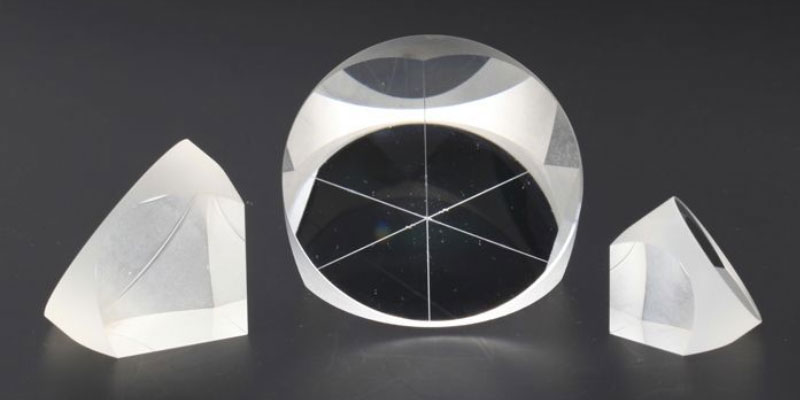
1.the function of the camera’s prisms
The primary function of the camera’s prisms lens is to refract light in the opposite way, allowing light to enter from behind the lens and enabling the shooting function. The focusing and beam splitting optical systems can both be realized simultaneously by the prism.

2. the prism to get the reverse of the image
The camera’s lens directs light onto the digital sensor chip or negative, however because of the lens’s imaging properties, the image is inverted. The image is inverted using a prism to ensure optimal display. The picture of the reverse refraction will be upside down on the prism, and the flip will be automatically realized by the left and right reversal of the image through its own structure.
3.the focus-achieving prism
By directing the direction of light refraction, the prism lens in the camera can be used to produce focus. The prism will automatically change its position and refraction angle when the camera needs to focus, allowing the light passing through the lens to be precisely focused on the film or sensor.

4.the beam splitter is realized using a prism.
For certain cameras to record multiple wavelengths of the image information simultaneously (such as visible and infrared wavelengths), beam splitting is necessary. The camera’s prisms can be adjusted to match the properties of various light wavelengths for spectroscopy, allowing for the separate recording of various light wavelengths.
Conclusion
In conclusion, the camera’s prism lens is one of the essential parts that allows the optical system to perform a number of crucial tasks, such as beam splitting, focus, and picture inversion. Gaining a deeper understanding of these concepts aids in both improving our shooting abilities and our comprehension of how the camera functions.
optlenses
Related posts
What Is Polarizer Film?
Porro Prism vs Roof Prism Lens
Dielectric Mirror Materials And Their Applications
What is the group velocity dispersion?



